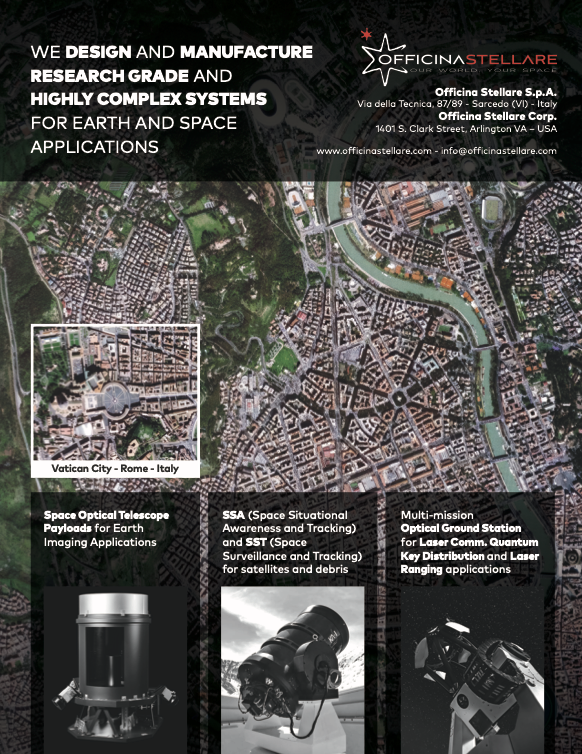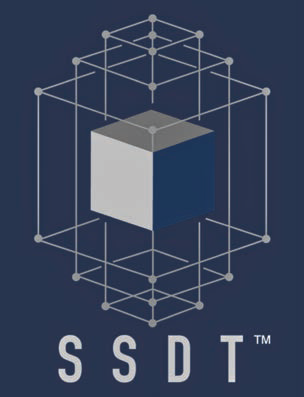John Dahlia, Director of Communications, TMC Technologies
In the ever-evolving landscape of space exploration and satellite technology, innovation is not just a goal; it’s a necessity. TMC Technologies, a West Virginia-based leader in advanced technology solutions, has once again demonstrated its commitment to pushing the boundaries of what is possible with the launch of two groundbreaking products: FlexSat® and the Small Satellite Digital Twin (SSDT®).

These two complementary systems are poised to redefine how small satellite missions are developed, tested, and deployed, offering a new level of flexibility, reliability, and cost-efficiency for both government and commercial space programs.
_________________________________
FlexSat®: A Modular Marvel
_________________________________
At the heart of TMC’s innovation is FlexSat®, a modular and customizable satellite platform designed to enhance mission assurance and reduce the risks associated with small satellite development.
 Unlike traditional, tightly integrated satellite systems, FlexSat® embraces a modular architecture that allows engineers to test and validate individual components before full integration.
Unlike traditional, tightly integrated satellite systems, FlexSat® embraces a modular architecture that allows engineers to test and validate individual components before full integration.

Jeff Edgell
“FlexSat® is the ultimate solution designed to enhance mission assurance for small satellites,” said Dr. Scott Zemerick, TMC’s Chief Engineer and Director of the Commercial Department. “Our proprietary technology is completely customizable and fully integrated with all hardware and software right out of the box.”
This plug-and-play approach is a game-changer. By enabling engineers to isolate and test subsystems independently, FlexSat® significantly reduces the likelihood of mission failure due to undetected component issues. The system’s open-source software framework further enhances its utility, allowing for extensive debugging, simulation, and real-time diagnostics.
_____________________________
Designed for Adaptability
_____________________________
FlexSat® is not just about reliability; it’s about adaptability. Whether supporting academic research, commercial ventures, or government missions, the platform’s non-proprietary, interchangeable components make it an ideal choice for a wide range of applications.

Denise Lindsey
“What sets FlexSat® apart? It’s all about flexibility,” said Denise Lindsey, TMC’s Vice President of Federal Civilian Division Programs. “Our non-proprietary, interchangeable components and open-source software allow for seamless integration and adaptability to meet your specific mission needs.”
This adaptability is especially valuable in today’s fast-paced space industry, where rapid prototyping and iterative development are essential.
FlexSat® empowers engineers and researchers to innovate without being constrained by rigid system architectures or proprietary limitations.
________________________________________
SSDT®: The Digital Twin Advantage
________________________________________
Complementing FlexSat® is TMC’s Small Satellite Digital Twin (SSDT®), a high-fidelity virtual environment that mirrors the physical satellite system in a digital space.
 SSDT® enables engineers to simulate, test, and refine satellite operations long before launch, dramatically improving mission planning and reducing costly errors.
SSDT® enables engineers to simulate, test, and refine satellite operations long before launch, dramatically improving mission planning and reducing costly errors.
Together, FlexSat® and SSDT® form a robust ecosystem for satellite development. While FlexSat® provides the physical platform for experimentation and deployment, SSDT® offers a virtual counterpart for predictive analytics, system modeling, and mission rehearsal.
This dual approach ensures that every component, from hardware to software, is thoroughly vetted and optimized before it is ever deployed.
_________________________________________________
NASA Partnership
Enhancing SSDT® for Space Debris Removal
_________________________________________________
In 2024, TMC Technologies reached a new milestone when it was awarded a NASA Small Business Innovation Research (SBIR) Phase I contract to enhance SSDT® for Active Space Debris Removal (ADR) research using space-based lasers.
This initiative, titled Advancing the SmallSat Digital Twin (SSDT®) for Active Debris Removal Simulations, is a collaborative effort with the West Virginia University Center for Innovation in Space Exploration and Research (CISER) and the West Virginia Small Satellite Center (WVSSC).
“We are honored to receive this award from NASA,” said TMC President and CEO, Wade Linger. “This grant will enable us to expand the capabilities of our SSDT® product to help solve the space debris dilemma and its threat to national security.”
The enhanced SSDT® will serve as a mature simulation test bed to evaluate and analyze space-based laser techniques for orbital debris remediation.

Dr. Scott
Zemerick
According to Dr. Scott Zemerick, who also serves as WVSSC Program Manager, the project will ultimately provide a high-fidelity digital twin environment for verifying the effectiveness of space-based laser systems.
Dr. Hang Woon Lee, Director of the Space Systems Operations Research Laboratory at WVU and a key collaborator on the project, emphasized the importance of this work.
“There is currently no simulation software suitable for performing space-based laser ADR research that provides as high-fidelity digital twin as TMC’s SSDT®,” Dr. Lee said. “Lasers are known to be the most promising, technically viable option for addressing debris of varying sizes.”
This research is further supported by Dr. Mehta, Director of CISER, and Dr. David Martinelli, who oversees the WVSSC from WVU’s College of Engineering and Mineral Resources.
Their combined efforts underscore the strategic importance of SSDT® in addressing one of the most pressing challenges in modern space operations.
_____________________
A Vision Realized
_____________________
For TMC Technologies, the development of FlexSat® and SSDT® is more than a technical achievement; it’s the realization of a long-held vision.
“When I began this company, I always envisioned TMC delivering innovative products like FlexSat®,” said Linger. “Thanks to the thought leadership of Denise Lindsey and the execution led by Dr. Scott Zemerick, our commercial department is now thriving. I couldn’t be more thrilled.”

Jeff Edgell
Chief Operating Officer and Executive Vice President, Jeff Edgell echoed that excitement. “We specialize in developing and delivering innovative solutions that streamline and secure our nation’s assets, both on Earth and in space,” he said. “The TMC FlexSat® exemplifies our mission and unyielding desire to shape a brighter future.”
_____________________________________
Empowering the Next Generation
_____________________________________
Beyond its technical capabilities, FlexSat® is also a powerful educational tool. Its modular design and open-source software make it an ideal platform for universities and research institutions looking to train the next generation of aerospace engineers.
By lowering the barriers to entry for satellite experimentation, TMC is helping to democratize access to space technology.
Students and researchers can now engage in hands-on learning and real-world testing without the prohibitive costs typically associated with satellite development.
_________________
Looking Ahead
_________________
As the space industry continues to expand, the need for reliable, adaptable, and cost-effective satellite solutions will only grow.
TMC has sold four of its FlexSat® systems to one government and one non-government research organization.
The SSDT® is being utilized by the West Virginia Small Satellite Center at West Virginia University for small satellite digital twin research.
 These products represent more than just technological advancements; they embody a philosophy of innovation, collaboration, and mission assurance.
These products represent more than just technological advancements; they embody a philosophy of innovation, collaboration, and mission assurance.
From concept to launch and now to orbital debris remediation, TMC is committed to supporting its customers every step of the way. Because, in space, failure is not an option.
www.tmctechnologies.com

John Dahlia Author John Dahlia has nearly 30 years of experience as an accomplished journalist in all aspects of new and traditional media. He began his career as a reporter/anchor/producer and eventually, news director for CBS Affiliate WDTV-TV in Bridgeport, West Virginia. As news director he helped lead his news team to numerous Associated Press and WV Broadcasters Association awards, including “Best News Operation” in 1999 and 2001.
He left broadcast news in 2004 to become the director of corporate communications for Global Science & Technology. In 2014 he returned to his roots when became the editor of the Preston County News & Journal. In 2016, John was given the added responsibility as editor of the weekly, Fairmont News. In 2017, John was promoted to NCWV Media Business Editor where he managed all editorial content for the State Journal. Today he works at TMC Technologies of West Virginia as its director of communications.

